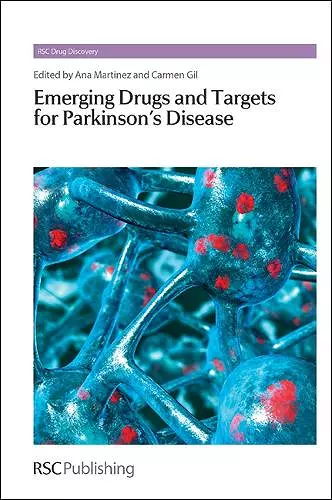Emerging Drugs and Targets for Parkinson's Disease
Carmen Gil editor Ana Martinez editor
Format:Hardback
Publisher:Royal Society of Chemistry
Published:29th Jul '13
Currently unavailable, and unfortunately no date known when it will be back

Affecting over 1.5 million people across the world, Parkinson's disease is a progressive neurological condition characterized, in part, by the loss of dopaminergic neurons in the substantia nigra pars compacta. It affects 1.5% of the global population over 65 years of age. As life expectancy is increasing, over the next few years the number of patients with Parkinson´s disease will grow exponentially. To date, there are no available treatments that are capable of curing Parkinson´s disease, and the current goal of therapy, dopamine replacement strategies, is to reduce symptoms. After several years of disease progression, treatment is complicated by the onset of motor fluctuations and dyskinesias. This information reveals the great importance and social need of finding an effective therapeutic intervention for Parkinson´s disease.
This exemplary new book reviews some of the most outstanding examples of new drugs currently in pharmaceutical development or new targets currently undergoing the validation process to try to reach the Parkinson´s drug market in the next few years as potential disease modifying drugs. Providing up to date and comprehensive coverage, this book is essential reading for researchers working in academia and industry in any aspect of medicinal chemistry or drug discovery.
"The introductory chapters describingn the current state of knowledge on pathogenesis, pathophysiology, symptoms, unmet medical needs, and new therapeutic targets are excellent." "The following new approaches are covered in some detail: protein phosphatases, a-synuclein, glutamate receptor subtypes, LRRK2 kinase, phosphodiesterases, serotonin 5-HT1A receptor, tryptophan metabolism, P2X7 purine (ATP) receptor, carotid body transplantation, and stem-cell therapy. This appears to present a subjective selection of potentially important targets for future AD therapeutics." "Altogether, I can recommend this volume of the excellent RSC Drug Discovery Series to medicinal chemists, (chemical) biologists and pharmacologists interested in drug development for Parkinson’s disease."
* ChemmedchISBN: 9781849736176
Dimensions: unknown
Weight: 724g
402 pages